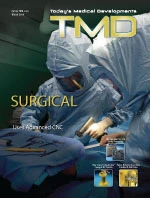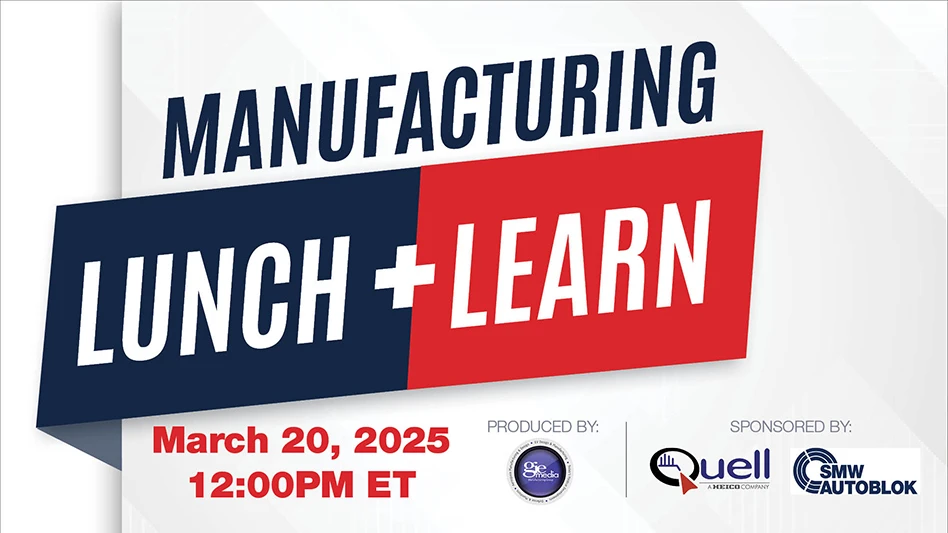
Dozens of patients – frequently tiny babies – have been killed or wounded by a little-known medical mistake made by nurses and doctors. Well documented in medical literature, the error is a tubing misconnection. It occurs when caregivers deliver the wrong medication or liquid to the wrong part of a patient’s body.
Now, borrowing theory from automotive and industrial designers, medical supply companies are redesigning their tubes and syringes with behavior-shaping constraints that make these devastating mistakes impossible. In this arena, Baxa Corp., has developed a syringe and pump specifically to feed premature babies in intensive care.
A Hidden Problem
Medical researchers since the 1970s have reported deaths and injuries due to tubing misconnections. Also called wrong-route errors, they occur when given the wrong gas, liquid, or medicine via the wrong route of administration to the patient.
Imagine what might happen if a bag of liquid food – designed for the stomach or small intestine – was accidently hooked into a central intravenous catheter, sending non-sterile liquid nutrition into a patient’s bloodstream. Alternatively, imagine if a blood pressure measurement tube was accidentally connected to the IV, delivering air and causing an embolism.
Wrong-route errors are particularly deadly for premature babies. Living in the NICU (neonatal intensive care unit), these smallest patients use tubes to consume tiny amounts of breast milk or formula. Their nutrition is pumped through a syringe into a tube that runs through their noses into their bellies (a nasogastric or NG tube). At the same time, they might be getting medication through an IV. Caregivers who confuse breast milk for an IV medication and send nutritional fluids into an infant’s bloodstream could cause brain damage or death.
From a medical engineering perspective, the problem lies squarely in the design of these tubes, catheters, and syringes. In particular, the issue is the nearly universal use of luer lock connectors in healthcare.
Developed in the 1900s, luer lock connectors work by means of a tabbed hub on the female fitting, which screws onto threads on a sleeve of the male fitting. Almost synonymous with syringe design, this connector is popular because it will not come apart as fluid courses through it as well as nurses are familiar with it.
Luer locks are on the tubes that connect bags of liquid and medication to syringes, and on the connectors that allow nurses to add new medication through an existing line. The problem is, the widespread use of luer connectors allows caregivers to join functionally dissimilar tubes and catheters.
Governmental, professional, trade, and patient safety organizations agree that the best way to combat tubing misconnections is to design physically incompatible tubing systems for different uses.
This design idea relies on a forcing function, or behavior-shaping constraints. If manufacturers introduced behavior-shaping constraints into medical tubing and syringes, nurses could not make inappropriate connections.
Tailor-Made
In 2003, one of the nation’s largest group purchasing organizations, Premier Inc., convened a meeting of neonatal medical suppliers. Premier challenged suppliers to design new NICU feeding sets that would prevent tubing misconnections.
The issue of tubing misconnections had become more visible as technology made it possible for greater numbers of babies, at ever-earlier ages, to live outside the womb. In the United States, over the past 25 years, the rate of premature births has climbed 36%, according to the March of Dimes.
Premier found that there were no products made exclusively for feeding these small at-risk patients. So, nurses and physicians modified existing equipment such as IV syringes (with luers) and corresponding tubing to create feeding sets. Mistakes could – and did – occur.
Engineers at Baxa quickly saw how to respond to Premier’s challenge. The market leader designs and manufactures oral dispensers for delivering oral and other non-IV medications safely. Oral dispensers are syringes for administering liquid medications to pediatric, adult, and elderly patients safely and accurately.
To ensure that these syringes would never be attached to a needle, the company designed them with a unique, non-luer tip. The tip easily handles the force of medication coming through it, and they were a natural choice for the Premier project.
Over the years, Baxa had worked with a number of manufacturers to develop neonatal NG feeding tubes that connect securely to the unique Baxa syringe tip. To meet the specific challenges of enteral feeding, Baxa created a dedicated enteral system to complement their existing ExactaMed Oral Dispensers. Differentiating these enteral syringes, is artwork developed with orange coloring to denote Enteral Feeding Only. Finally, Baxa branded them NeoThrive for their focus on helping neonatal patients grow.
NeoThrive Enteral Syringes come in seven sizes and several companies manufacture NG tubes that are compatible with the NeoThrive Enteral Syringes. Made of a pliable plastic material, they pressure-fit easily onto the tip of the NeoThrive Syringe. The syringe tip and tube are wide enough for enteral fluids to flow freely.
These dedicated enteral syringes were introduced in 2003. The products were tested and refined in Premier member hospitals during clinical trials. To complement the syringe and tubes, in 2008 Baxa introduced an enteral-only syringe pump. The pump contains all the standard features of an IV pump, but only recognizes the NeoThrive Enteral Syringes to ensure a dedicated system for enteral feeding. The NeoThrive Pump can be set to deliver continuously, or to pump once over a series of hours. And, it has an audible signal if the syringe is displaced, if the pump has paused too long, or if the syringe is empty. What makes it especially safe, though, is that the pump only works with NeoThrive Enteral Syringes.
Safe Medical Practices
It is clear that engineers play an important role in designing products that are not just safe by themselves, but that promote safe medical practices when used in a hospital setting.
Baxa estimates that while some 50% of all hospitals are still using luer connections for feeding babies in the neonatal intensive care unit, customer interest in safer designs is growing.
For nurses, the biggest challenge in adopting NeoThrive has been adapting to a non-luer connection, then working with a non-IV pump. Fortunately, ongoing regulatory and professional attention to tubing misconnections has changed the profession’s mindset, and most nurses now see the need to use tubes and pumps designed specifically for enteral feeding.
Given the growing push towards public reporting of medication errors, hospital administrators are also sensitive about developing workflow processes – and buying products – that prevent medical errors.
Baxa Corporation, acquired by Baxter
Englewood, CO
https://www.baxter.com/

Explore the March 2010 Issue
Check out more from this issue and find your next story to read.
Latest from Today's Medical Developments
- Kistler offers service for piezoelectric force sensors and measuring chains
- Creaform’s Pro version of Scan-to-CAD Application Module
- Humanoid robots to become the next US-China battleground
- Air Turbine Technology’s Air Turbine Spindles 601 Series
- Copper nanoparticles could reduce infection risk of implanted medical device
- Renishaw's TEMPUS technology, RenAM 500 metal AM system
- #52 - Manufacturing Matters - Fall 2024 Aerospace Industry Outlook with Richard Aboulafia
- Tariffs threaten small business growth, increase costs across industries





